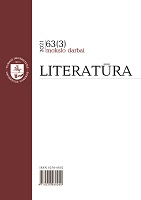The Islands of Malta and Gozo in Greek and Roman History and Literature
The Islands of Malta and Gozo in Greek and Roman History and Literature
Author(s): Horatio Caesar Roger VellaSubject(s): Archaeology, Comparative history, Ancient World, Sociology of Literature
Published by: Vilniaus Universiteto Leidykla
Keywords: Malta; Gozo; Mediterranean Archaeology; History; Literature; Geography;
Summary/Abstract: Malta, Gozo and Comino, the Thrinacia of Homer and the Melitē, Phoebe and Lampas of Scylax, form an archipelago in the centre of the Mediterranean Sea inhabited by both Phoenicians and Greeks before the coming of the Romans to those islands. Many geographers mention them, but other authors refer to their importance as places of production of textiles and other natural goods like oil and honey. Of particular importance was the site of the temple of Juno and Hercules known to Phoenicians, Greeks, Romans as well as to Numidians. Malta and Gozo were also praised for their good harbors and stone. The Grand Harbour itself served as an important Byzantine base with its tower and inner harbour, both places bearing Greek names. Malta was converted to Christianity in AD 60 following St Paul’s shipwreck there, where he spent three winter months. The aim of this article is to scrutinize the information about Malta and Gozo in numerous Greek, Roman and Christian sources.
Journal: Literatūra
- Issue Year: 63/2021
- Issue No: 3
- Page Range: 58-73
- Page Count: 16
- Language: English

